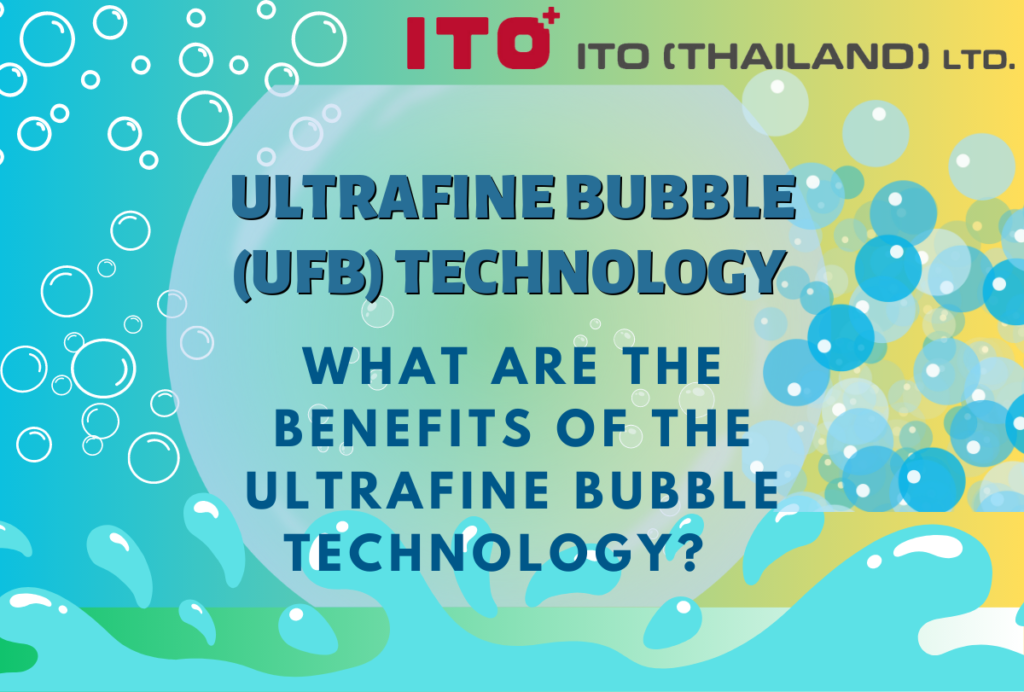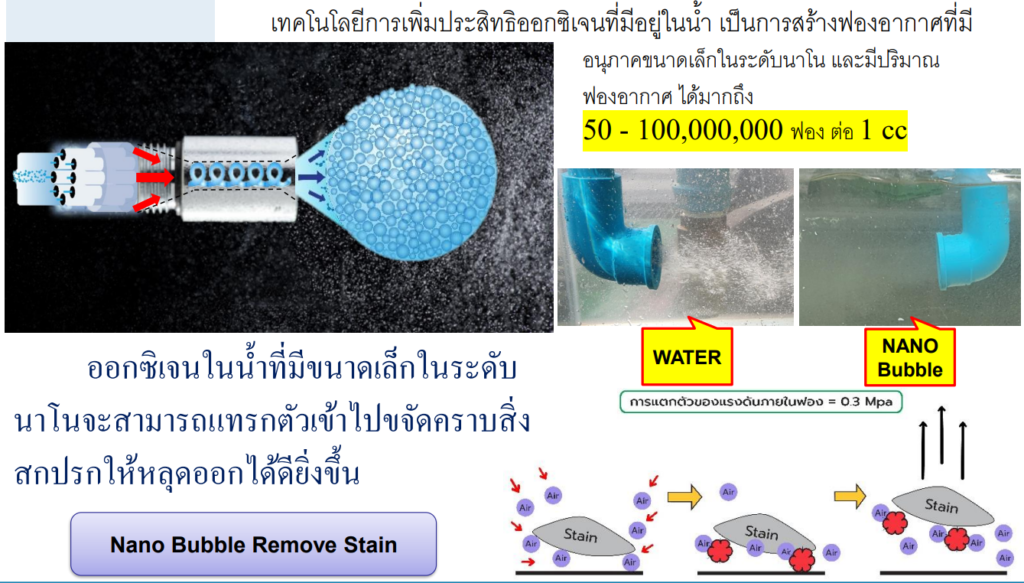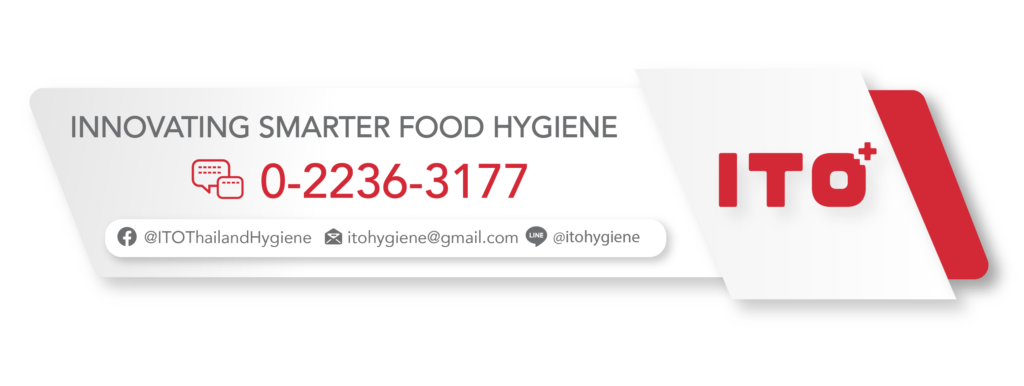ITO Thailand Hygiene Blog
Ultrafine bubble (UFB) technology (Part 2)
What are the benefits of the ultrafine bubble technology? (continued)
You can read more about what the ultrafine bubble technology is and its benefits (part 1) here.
3. Food production processes
In the food industry, the ultrafine bubble technology has played a role in improving product properties by enhancing stability and changing the texture to food that has air in the structure such as foams, gels, creams, soft drinks, bakery etc. (1) The technology also improves the viscosity of liquid food as desired because the ultrafine bubbles reduce friction and increase fluid flow. For example, a study on the production of powdered milk with a spray dryer (2) found that applying the liquid that has undergone the process of the ultrafine bubbles before drying helped the powdered milk particles to be smaller, rounder, and smoother in shape. Moreover, the ultrafine bubbles are also used to aid in the extraction process. A study on the extraction of functional compounds from tea seeds (3) found that the use of the ultrafine bubbles can help with extraction because the explosion of small bubbles helps to damage plant cells. This allows more functional substances within the cells to be extracted. Regarding the application of the ultrafine bubbles in frozen foods, it has been reported (1) that the ultrafine bubble technology can help reduce the size of ice crystals. This is because the explosion of small bubbles induces a large number of ice crystal nuclei and helps to increase the freezing rate as well.
In addition to aiding the production processes, the ultrafine bubbles can also extend the shelf life of food products. There are (4) reports that using ozone nanobubbles to wash fresh lettuces for 5 minutes can inhibit microbial growth by approximately 2 log CFU/g and enzymatic browning in the lettuces for up to 6 days when stored at 4°C. Similarly, another study (5) found that nitrogen in the form of ultrafine bubbles can extend the shelf life of chilled salmon because they contribute to the formation of free radicals in conjunction with the use of nitrogen to reduce the oxygen required for microorganisms on fish pieces to help reduce the amount of aerobic microorganisms on the fish.
4. Wastewater treatment
The food industry inevitably uses water resources in its production process, resulting in wastewater that must be treated before being discharged into the environment. The addition of ultrafine bubbles can help in wastewater treatment by acting on many mechanisms collectively. The first mechanism, physical cleaning, is the impact when the bubbles burst in conjunction with the pulling of dirt from the surface by the charge on the bubble surface (6). This takes dirt off the surface of the drain, reduces clogging, and helps dirt move through tube settlers or grease separating layers better. The next mechanism is to enhance the growth of aerobic microorganisms in wastewater by adding small amounts of air to make it easier for the microorganisms to consume. When the microorganisms grow, organic matter in the wastewater is used. This can reduce the amount of organic matter in the wastewater. This process is called biological purification. (7) The third mechanism is the oxidation of organic and inorganic substances with free radicals of gas bubbles that have oxidative properties. For example, a study on the treatment of heavy metal wastewater with oxygen nanobubbles found that there is oxidation process and heavy metal sedimentation from the wastewater (8). There was also the decolorization of various colors from chemicals and organic matter. (e.g., Rhodamine B, phenol, organic wastewater dye, sulphoxide, etc.) and other chemicals (e.g. ammonia, fluoride, pesticide, etc.) from the oxidation process. (7)
How are ultrafine bubbles created?
There are several methods for creating the ultrafine bubbles, depending on the purpose and type of gas that needs to be contained in the ultrafine bubbles. For example, aeration, nitrogen bubbles are used to reduce oxygen for the purpose of inhibiting aerobic microorganisms or adding nutrients to plants. Ozone bubbles are used to prolong the life of ozone that reacts too quickly with air. This makes ozone useful for disinfecting, treating wastewater, or cleaning more efficiently and it can penetrate into small corners as well.
Zhou et. al (2021) (9) Explain that bubble formation consists of two mechanisms. The first mechanism is to create bubble nuclei in the water and stop bubble expansion so that the bubbles are stabilized at the nano or micro particle level. Another mechanism is making large and unstable bubbles smaller and stabilized at the particle level. Examples of ultrafine bubble creation processes include Electrolysis, Decompression, acoustic cavitation, ultrasonic cavitation, Pressurization, Hydrodynamic cavitation, and magnetic fields.
Innovation in ultrafine bubble creation
Ito (Thailand) presents the ultrafine bubble technology that is uniquely designed with a patent from Japan. The technology causes turbulent flow within the pipe, minimizes the size of the bubbles in the water, making it possible to create ultrafine bubbles in the water using only a water hose with sufficient pressure (at least 0.2 MPa). There is no need for assembly of electrical devices to create bubbles and no consumables to be replaced. It is easy to install, suitable for both household and food industry applications in every part of the supply chain, from agriculture, raw material management, surface cleaning and disinfection to the wastewater treatment system without using chemicals. This makes the ultrafine bubble technology another innovation that helps bring the food industry towards sustainability. This ranges from saving resources upstream of the food industry chain (e.g., reducing the use of water and fertilizers in agriculture) to helping to treat wastewater at the end of the supply chain to reduce the burden on the world while increasing the efficiency of the food industry chain sustainably.
References
1.Phan, K. K. T., Truong, T., Wang, Y., & Bhandari, B. (2020). Nanobubbles: Fundamental characteristics and applications in food processing. Trends in Food Science & Technology, 95, 118-130.
2.Babu, K. S., Siliveru, K., & Amamcharla, J. K. (2022). Influence of micro-and nano-bubble treatment on morphological characteristics and flow properties of spray-dried milk protein concentrate powders. JDS communications, 3(6), 398-402.
3.Javed, M., Belwal, T., Ruyuan, Z., Xu, Y., Li, L., & Luo, Z. (2022). Optimization and mechanism of phytochemicals extraction from Camellia oleifera shells using novel biosurfactant nanobubbles solution coupled with ultrasonication. Food and Bioprocess Technology, 15(5), 1101-1114.
4.Pongprasert, N., Jitareerat, P., & Srilaong, V. (2014, August). A novel technique using ozone micro bubbles to control microbial contamination and browning of fresh-cut lettuce. In XXIX International Horticultural Congress on Horticulture: Sustaining Lives, Livelihoods and Landscapes (IHC2014): 1120(pp. 177-182).
5.Barua, T. P. (2020). Nitrogen-Nanobubble technology to improve the shelf-life of fish: A dissertation submitted in partial fulfilment of the requirements for the Degree of Master of Science in Food Innovation at Lincoln University(Doctoral dissertation, Lincoln University).
6.Jin, N., Zhang, F., Cui, Y., Sun, L., Gao, H., Pu, Z., & Yang, W. (2022). Environment-friendly surface cleaning using micro-nano bubbles. Particuology, 66, 1-9.
7.Xiao, Z., Aftab, T. B., & Li, D. (2019). Applications of micro–nano bubble technology in environmental pollution control. Micro & Nano Letters, 14(7), 782-787.
8.Han, Z., Nhung, N. T. H., Wu, Y., Huang, M., He, C., Lu, S., … & Fujita, T. (2022). Arsenic (III) oxidation and removal from artificial mine wastewater by blowing O2 nanobubbles. Journal of Water Process Engineering, 47, 102780.
9.Zhou, L., Wang, S., Zhang, L., & Hu, J. (2021). Generation and stability of bulk nanobubbles: A review and perspective. Current Opinion in Colloid & Interface Science, 53, 101439.
Related Post
-

Liquid nitrogen in food industry
You maybe have heard that liquid nitrogen can rapidly freeze the food, haven’t you? And what are its advantages and benefits? Let's get to know the liquid nitrogen in food industry with ITO (Thailand).
-
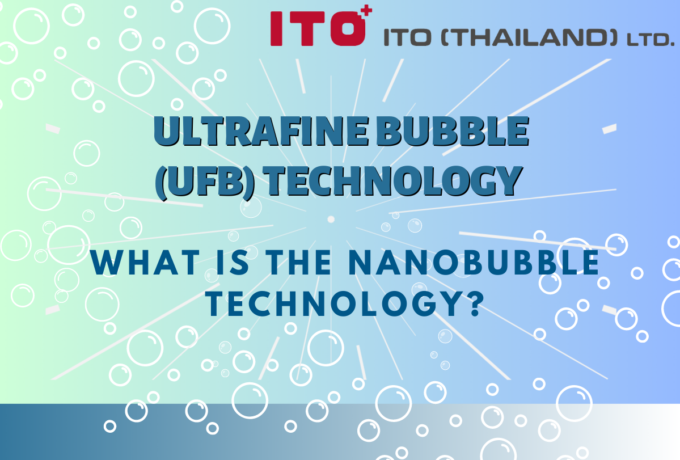
Ultrafine bubble (UFB) technology (Part 1)
Simple bubbles when transformed into the micro-nano level can do more than you think. Let's learn about the technology of these tiny bubbles and their application in the food industry with ITO (Thailand).
-
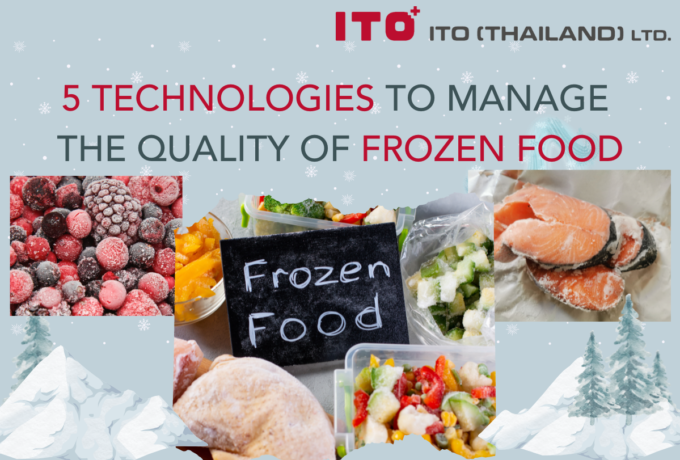
Frozen food storage management
Freezing is a method of food preservation commonly used in food that goes bad quickly such as ready-to-cook fresh food, ready meals, or foods in which nutritional values decay easily, or have substances that are sensitive to temperature, light, oxygen, etc. Freezing uses a principle of quickly solidifying water in the products, making the molecules of the substances unable to react to one another, thus the foods last longer. It also suppresses the growth of microorganisms and kills parasites. For instance, USFDA suggested controlling parasites in fish consumed raw such as sushi and sashimi by freezing the fish at the minimum of 20 degrees Celsius for 7 days or stored at -35 degrees Celsius for 15 hours to control parasites in fish (conditions may depend on the size of the fish as well).
-

Boot Cleaner
Pay attention to the hygiene of the footwear for good hygiene in the food industry
-
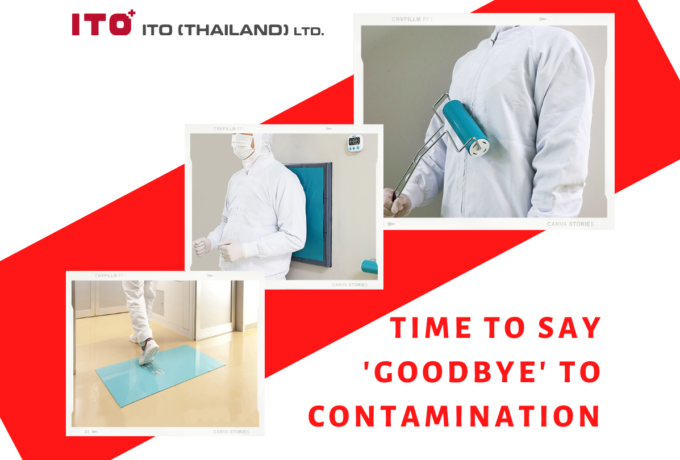
Innovation for sustainable physical contamination prevention
It is known that external impurities pose a food safety risk. One of the main channels of contamination is the presence of humans as a carrier of dust and dirt into the production or high-risk areas, causing dirt, germs, or foreign matters to contaminate food and harm consumers.
-
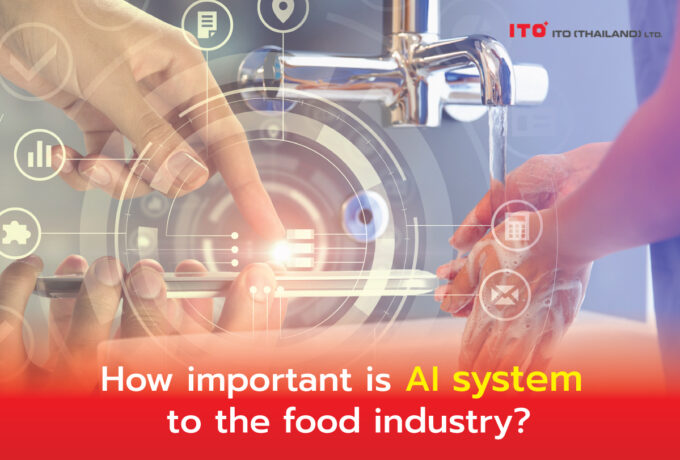
AI technology in Food industry world
Case study of HACCP assisted hand washing system by AI technology








